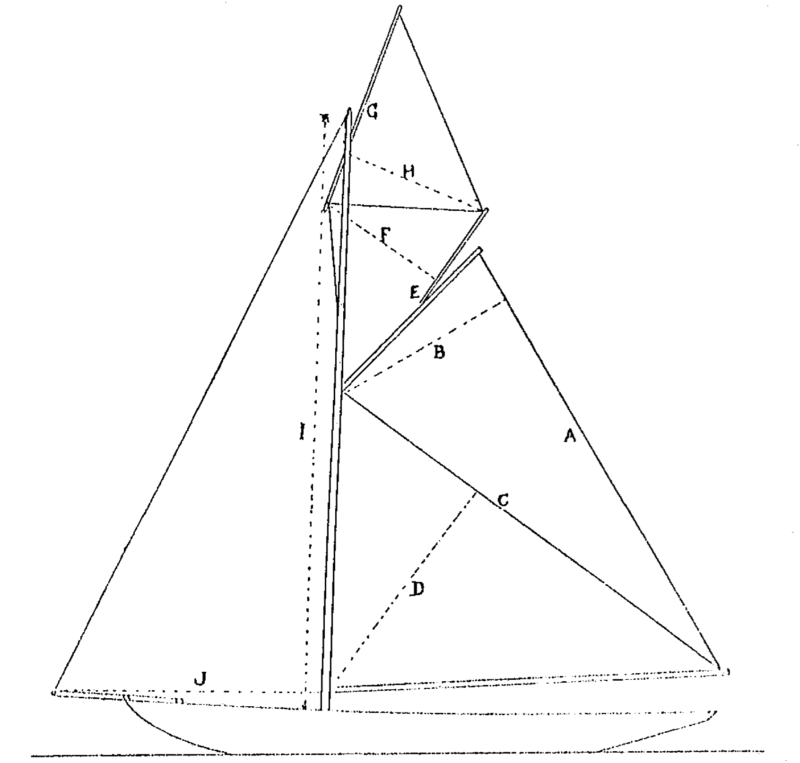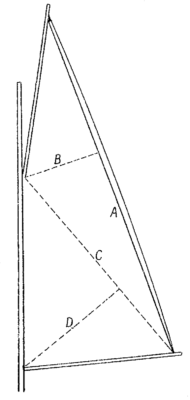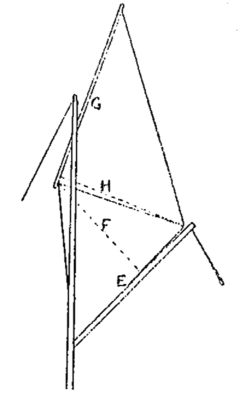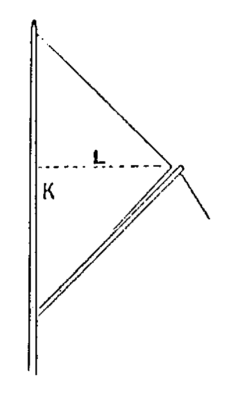Vintage 10-Rater Class Rules
These Vintage 10-Rater (V10R) Rating Rules of 2023 shall govern Vintage 10-Rater activities from date of publication until revised by consensus or recommendation by Vintage 10-Rater class owners.
It is reasonable to expect that the class rules or plans may evolve with time to improve clarity, correct unforeseen problems, or embrace advancing R/C technology. It is the intent of the class that any potential changes not disqualify existing boats.
All Vintage 10-Rater model yachts participating in racing competition sponsored by US VMYG must comply with these class-rating rules. It is the responsibility of each skipper to prepare his boat in accordance with the Rules and Specifications referenced or included in this document. The intent of the US VMYG is to encourage participation and to simplify any certification or measurement processes as much as is consistent with fair racing.
The rating rules for the Vintage 10-Rater division are based on the 1948 Rating Rules for the 10-Rater Class by the Model Yachting Association of Great Britain and the Commonwealth. Note that the waterline length and sail area permitted by this 1948 rule are generally smaller than those permitted by the 1967 10-Rater rule and the metric versions of the 10-Rater rule. This is deliberate, with the purpose of preserving vintage 10-Rater models designed prior to 1967.
Note that the determining factor is the design type, not the actual date of the design. This is meant to encourage new designs that fall within the spirit of Vintage 10-Rater design types and also to encourage reproductions of earlier designs.
For the purposes of these Class Rules, the following Definitions apply:
- Keel: A fixed appendage along the centerline of the boat’s underbody. Its requirements and constraints are specified in the “Hull” section of these Rules.
- Centerboard: An appendage to the boat’s underbody that can be extended below the surface of the water that is neither a “keel” nor a “rudder/skeg” as those terms are defined herein. In common usage, a “centerboard” is an unweighted or lightly weighted movable underwater appendage.
- Rudder: An underwater appendage used for steering. Its requirements and constraints are specified in the Rules.
- Skeg: A fixed appendage to which a rudder may be attached. Its required attributes are described in the “Hull” section of these Rules.
- Bilge-boards: Also known as bilge keels. Underwater appendages, usually found in pairs, that are attached to or protrude from slots in the hull in the region of the turn of the bilge.
- Leeboards: Similar to bilgeboards, except that they typically attach to the topsides and extend down into the water immediately adjacent to the boat.
For racing purposes, V10R fleets may be separated into “Traditional” and “High Flyer” divisions. The separation is based on design characteristics. The specifications are the same for both Divisions, with the following exceptions:
Traditional
- The draft is limited to 15 inches.
- Rudders shall be keel- or skeg-mounted. The area of a skeg must be at least 50% of the area of the rudder; for this calculation, “rudder” is the portion of the rudder/skeg combination that articulates and does not include the area of the fixed skeg.
High Flyer
- The draft is limited to 20 inches.
- Rudders may be of the spade or balanced design in High Flyers.
- Carbon fiber is permitted in the fin in High Flyers.
Rating Formula
The Rating Formula for the Vintage 10-Rater Class is: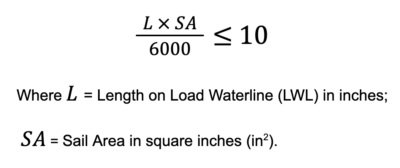 A Vintage 10-Rater is a monohull sloop with a Rating no greater than 10.
A Vintage 10-Rater is a monohull sloop with a Rating no greater than 10.
Units of Measurements
- Linear – Inches and decimal fractions of an inch.
- Square – Square inches and decimal fractions of a square inch.
- Weight – Pounds avoirdupois (lb) and decimal fractions of a pound.
All measurements shall be rounded to the nearest 2 decimal places.
Load Waterline Measurement
All yachts shall be measured in racing trim with the largest suit of sails bent and set to the satisfaction of the measurer.
The waterline for this class shall be measured in fresh water.
- Inside Ballast (if any) must be fixed in place and included in the displacement used to determine the LWL.
- Total Displacement of all yachts must not change after the Rating has been declared.. No shifting ballast is permitted.
- Projections, Notches, or Hollows in the Hull. If any part of the yacht below the LWL (except the rudder) projects beyond the extremities of the LWL, such projections shall be added to the measured length.
Notches or hollows in the profile, intended or having the effect of reducing the waterline length for measurement, are not permitted.
Hull
- Wooden hulls may be built using plank on frame or horizontal and vertical lifts. It is permissible to cover a wood hull and deck with a light layer of fiberglass cloth to prevent leakage. Balsa wood is not permitted in the hull fairbody (i.e., the “canoe-body”). Balsa may be used as a filler material in the core of a rudder or keel, but balsa cannot be considered the primary strength in these appendages.
- Fiberglass hulls laid up in a mold are permitted. Minimum weight of fiberglass hulls is 2 ½ lb. The “hull” is the shell and any permanent internal structure or framing that reinforces the hull. Internal structures whose sole purpose is to hold the electronics are NOT part of the “hull” weight, nor is the rudder, electronics, deck, etc.
- Use of carbon fiber, Kevlar or similar materials to form the hull fairbody is forbidden. Carbon fiber is permitted in the fin in High Flyers only.
- Modern adhesives are permitted to produce a strong hull impervious to leaks.
- All ballast must be fixed and shall not be changed during a race or series of races.
- Bumpers are mandatory and are limited to 0.5-in overhang.
- It is permitted to enlarge the area of the rudder from its original size to achieve acceptable steering with radio control.
- Changing rudders during a race or series of races, except in bona fide cases of damage, is prohibited.
- There can be no more than one rudder. Neither the keel nor any part of it shall be movable (e.g., keel “trim tabs” are not permitted). Rudders may be attached to the trailing edge of the keel, in which case they are the single permitted rudder.
- There are no restrictions as to centerboards, bilgeboards, or leeboards provided that no moving surface is part of the concentrated ballast.
Deck
Decks shall be constructed of wood: solid, planked, or plywood.
Rig
- Bermuda, Marconi, jib-headed mainsail, gaff, gunter, wishbone, and other types may be used.
- Masts and spars shall be constructed of wood or aluminum. ”Groovy” masts or traditional jacklines and lashings or loops of line may be used to hold and support the sail.
- The cross-sectional shape of the mast is not restricted, but the maximum cross-sectional dimension is limited to 1 ⅛ in.
- There are no limits on the height of the rig or of the foretriangle hoist above deck.
- Masts must be substantially straight, bent only by temporary action of backstay and shrouds to allow for wind strength adjustment. Hollow masts and spars and rotating and bipod masts are allowed.
- Small suit sails—These need not be the same shape as the full suit, provided that no dimension exceeds the limits of the full suit, taken at the same place.
- Small suit masts and spars—These may be shorter, but not longer, than those of the full suit.
- Sails Unfairly Sheeted or Set—No contrivance such as an outrigger shall be used on any headsheet.
- Swing rigs are prohibited.
Fittings
Fittings for deck and rig should be made of brass, stainless steel, or other non-corrosive metal in keeping with materials and practices of the period.
Sails
- Sails may be constructed as either a single or multi-panel sail.
- The body of each sail shall be made of woven cloth, such as cotton, a cotton-synthetic blend, Dacron®, or nylon, such as light spinnaker cloth. No material other than woven sailcloth is allowed for tablings or corner reinforcements in the head, tack, or clew of any sail except sail reinforcing tape.
- Mylar or other modern plastic-like materials are not allowed.
- Mainsail leech roach shall not exceed 3.5 in. Jib leech roach shall not exceed 1.5 in. Rounded foot of loose-footed sails shall not exceed 1 in.
- The roach and the rounded foot of sails shall be a continuous, arc-like curve from head to clew and from clew to tack.
- Mainsail battens shall not exceed four in number and 7 inches in length, and they shall divide the mainsail leech into approximately equal parts. Headsail battens, if any, shall divide the headsail leech into approximately equal parts.
- Headsticks or headboards shall not exceed 0.75 in across the base for headsails and mainsails. No other wire or stiffener shall be put in the head of the sails.

[Download the Class Insignia PDF for full-size patterns of the class insignia.]
- Sail area shall not exceed the area defined by the class formula above.
- Sail area measurement procedures for triangular sails shall be the same as the Vintage Marblehead class (https://usvmyg.org/classes/vintage-marblehead/vintage-marblehead-class-rules#vmsail).
- Sail area measurement for otherwise-shaped sails are included in the Appendix.
All Vintage 10-Rater Model Yachts shall be officially registered with the V10R Class Coordinator to obtain an official sail number. Sail numbers shall be preferably black, 3-4 in tall, 0.5 in thick, and they shall be affixed to both sides of the mainsail between the second and third battens on a line perpendicular to the leech. The insignia includes letters that are 1 ¼ in high. It should be placed in the upper quadrant of the mainsail on the starboard side.
Radio Control
There are no limits on the number of radio channels or the functions that they control.
Appendix: Sail Measurement
Sail area measurement procedures for triangular sails shall be the same as the Vintage Marblehead class (https://usvmyg.org/classes/vintage-marblehead/vintage-marblehead-class-rules#vmsail).
Other sails shall be measured as described below:
Gaff Mainsail or Lug
See Figures 1 and 2. Multiply A by B and C by D; add the products and divide by 2.
Yard Topsail
See Figures 1 and 3. Multiply E by F and G by H; add the products and divide by 2.
Jib Headed Topsail
See Figure 4. Multiply K by L and divide by 2.

